Courthouses
When I arrived in downtown Louisville this morning, I spied a sight I haven't seen in several years. The front doors to the Old Court House were propped open, wide open. This is the building located at 527 W. Jefferson that the Mayor of Louisville-Jefferson County Metro calls Metro Hall but very few others do. Some call it the Court House, others the Old Court House, but few call it Metro Hall. Gideon Shryock was the original architect, starting the project in 1830. The building sat unfinished for some twenty years, serving offices of both the County of Jefferson as well as the (old) City of Louisville, now known (under Merger) as the Louisville Urban Services District. It was completed under the direction of Albert Fink around 1860, about the time Louisville's current City Hall was begun. For a while under Merger, City Hall, located at 601 W. Jefferson Street, was called Legislative Hall. Nobody knew it though, and the large "City Hall" plaque remains on the side of the building at 6th and Jefferson Streets.
Since the events of September 11, 2001, our local governments have restricted access to both the Old Court House and City Hall. One enters City Hall via an entranceway sandwiched between the original Jefferson Street entrance and that of the City Hall Annex, whose front doors have also been permanently shut. From this entrance, access is made to the City Hall, the Annex, and the offices built in between the two in a space known until the late 1970s as the Louisville Police Court building. Entering the Old Court House isn't all that difficult, but neither is it as classical as it once was when one ascended the limestone steps which stretch along the central portion of the building, surrounded by gigantic columns, with the ultimate entry through two old tall wooden doors, oddly painted green. They've been green as long as I can remember. Attached to the building is a dedication to Louisville's founder, George Rogers Clark, who actually lived across the river at what became the Town of Clarksville, Indiana, located as pointed out in a previous entry right at Milepost 606 on the Ohio River, but on the Right Bank, not the Left.
There was at one time a movement, although admittedly not much of one, to relocate Kentucky's government from Frankfort to Louisville. The Commonwealth engaged itself in a Constitutional Convention in 1849. The leader of the convention was Louisville businessman James Guthrie, who in his life served as president of the L&N Railroad, the Louisville and Portland Canal, and the University of Louisville, which he helped to found. It was Guthrie's plan to move the capital fifty five miles west and to have Shryock's Greek Revival design of a building serve as the Commonwealth's seat of government. But, alas, that didn't happen, and Kentucky's capital remains in the lazy "S" curves of the Kentucky River at Frankfort. Ironically, the then-capital at Frankfort was another Greek Revival design by the same Gideon Shryock, also begun (but also finished) in 1830 - Shryock was twenty-five years old at the time. His building served in that capacity until the "New Capital", as they still call it in Frankfort, opened in 1910.
In my vocation and avocation, I have often found myself in Court Houses around Kentucky, searching records in Deed Rooms, called Recorder's Offices in Indiana. I have done title work both as a job and a hobby for many years. Another hobby, genealogy, requires similar research in old deeds, wills, and lawsuits. Many of Kentucky's counties have in recent years added either a new courts building, usually called a Judicial Center (as we have here in Jefferson County), or they have added a new Fiscal Court Building to house county offices and turned over the original Court House to the Courts system (as was done in Oldham County). Up in Scott County, Indiana, a few miles to the north, they built a replica of the Court House immediately next door to the old one and attached the two buildings so they look to be built as wings. Some old court houses have become museums, as is the case of both Nelson and Fayette counties. In other counties, Court Houses have expanded simply by adding wings to either end. In Bullitt County, they did all four - built a Courts building, a new Fiscal Court Building (named for the recently retired County Clerk), and expanded the old Court House with new wings, placing a museum in the original part of the building. Immediately across the river, both Floyd and Clark counties have combined City-County government building, neither one of which offer much in classical design, but both are adequate for the purposes they serve.
Over the years, I've been in many court houses throughout Kentucky and Indiana. Especially in Indiana, the doors are usually open with a nice breeze blowing through on days like today. Many are in the shape of a square, with a central foyer, and court rooms on the upper floors. The lower floors serve as a social center, and many are open around the clock. But, as I said, that isn't the case here, where we've shut the buildings up lest there be some terrorism I suppose. It is rather sad, in my opinion, that we have allowed such a feeling to come between the people and the government buildings which house the governments which serve them. Court Houses are the very essence of our democratic republican form of government, the "county" being the basic level of government throughout the Republic [although called a parish in Louisiana and a district in Alaska).
When I saw the doors opened this morning, I climbed the steps only to find a guard doing his job. He told me I had to go back down the steps and around to the back door, now the main entry. It seems the Air Conditioning system had failed over the weekend and the doors to the Court House were only open to let hot air out, not to let any people in. 'Tis a pity.


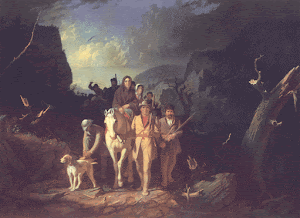












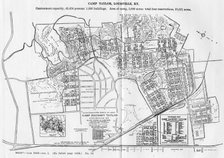
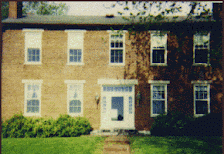

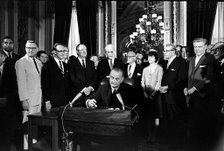

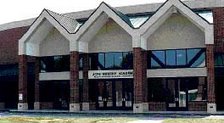
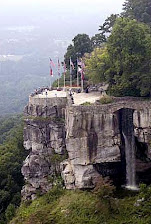

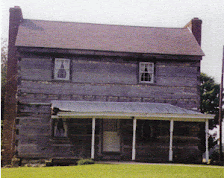
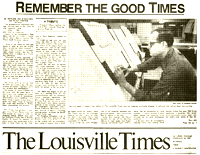
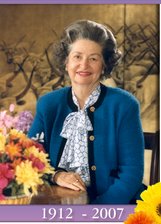

No comments:
Post a Comment